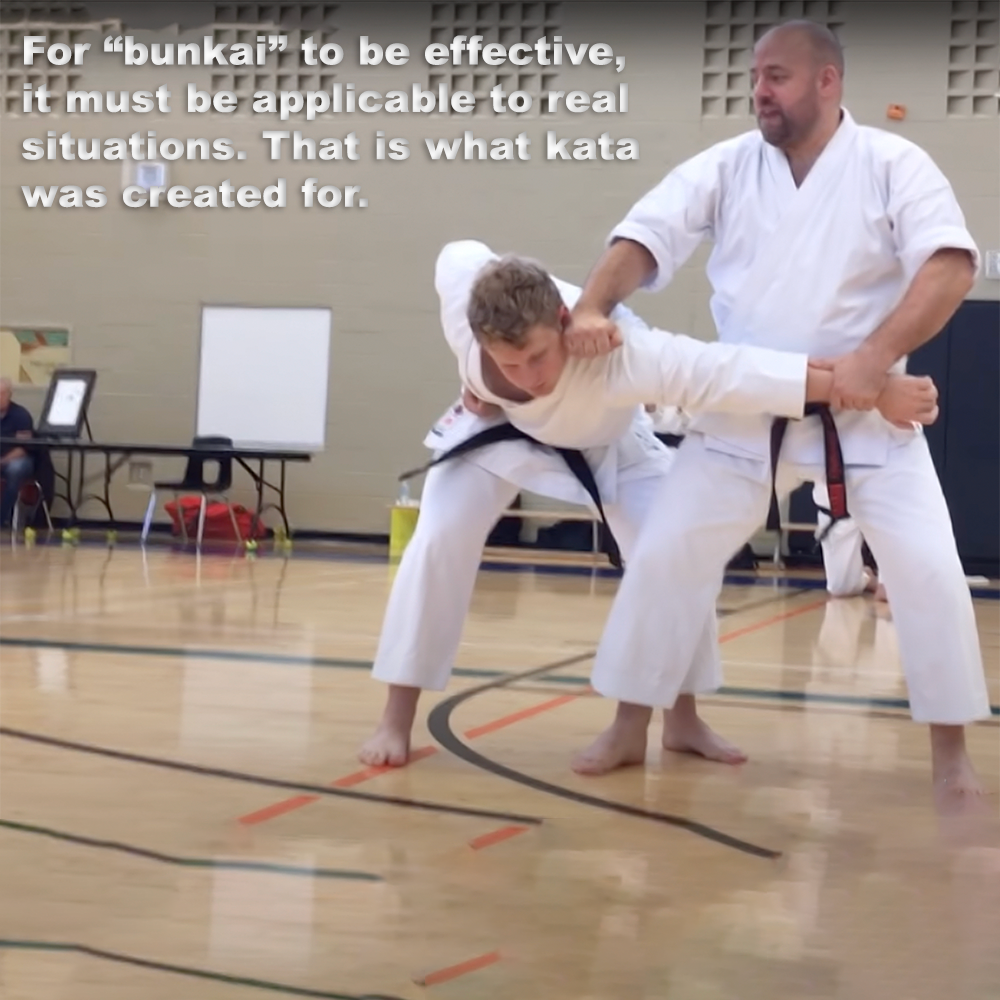
For "bunkai" to be effective, it must be applicable to real situations. That is what kata was created for.
Posted by ADAM CARTER on DEC 21, 2022

For "bunkai" to be effective, it must be applicable to real situations. That is what kata was created for.
Think of the massive advantage you'd have if you knew what your opponent was going to do before it happened. You'd be able to react instantaneously.
A person’s unconscious and instant reaction to a stimulus is known as a reflex. Touching a hot stove forces the individual to instantly withdraw their hand. The person will not hesitate or think about moving away from the intense heat. Rather, the motion is involuntary and instant.
A “predictable response” refers to the unconscious action an opponent will take when subjected to certain stimuli. These unconscious actions are common to all human beings, and are used within the kata to predict the opponent’s most likely position and movement.
There are two categories of predictable responses: physiological responses and trained responses.
Physiological responses.
A physiological response is something that is programmed into us at a biological level. We're often not even conscious of these things happening, which is part of what makes them easy to exploit and use to our advantage.
Trained responses.
A trained response is something that we've programmed into ourselves through diligent practice and repetition.
By attempting a technique or tactic on your opponent, you're encouraging a predictable response. Technically, there are infinite possibilities for what could happen during a confrontation. However, taking certain actions greatly increases the likelihood of your opponent reacting in a predictable fashion.
Choki Motobu – who was one of the most feared fighters in karate history – once said “In a real confrontation, more than anything else one should strike to the head first, as this is the most effective”. If this is so, then why are there so many attacks to the body in kata?…. The answer is that there are not!
Many of the strikes that are “middle level” in the kata are preceded by actions that will cause the opponent’s head to drop, through the use of predictable response. So what looks like a blow to the body, is in fact a blow to the head.
No kata techniques rely upon predetermined responses from the opponent, however predictable responses should be considered.
It should be obvious that an opponent will never respond in a predetermined manner in a fight. This is one of the flaws with “bunkai” often demonstrated using karate type attacks. Such demos are not realistic because they rely on the opponent's compliance. Effective “bunkai” is not something you do with a cooperative partner; it's something you do to an uncooperative opponent.
Although we can't rely on the opponent's compliance, some physical responses are instinctive and therefore predictable. Such instinctive motions are therefore often taken into consideration by the kata.
An opponent is always very likely to move away from any source of pain, and any follow up movements should acknowledge this and other similar involuntary actions.
For “bunkai” to be effective, it must be applicable to real situations. That is what kata was created for. To understand kata, training must be realistic, therefore you should always consider predictable responses by your opponent in your training.
With thanks to Iain Abernethy
